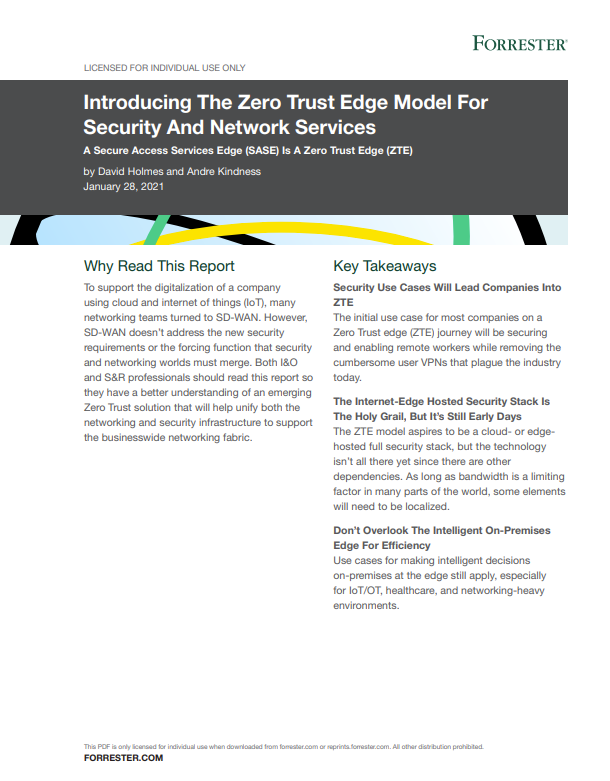The smarter route to SD-WAN
How the right partnership can take the time and hassle out of next-gen networking

If you deal with networking technology, there's one trend that you'll almost certainly have heard more about than any other, and that's SD-WAN. It's been labelled as 'the next big thing' for a few years now, with everyone from IT admins to vendors and providers extolling its virtues.
Short for software-defined wide-area network, SD-WAN technology is used to simplify the management of wide-area networks which connect remote locations like data centres or regional offices across large geographic distances. It does this by abstracting the control and management from the network and hardware layer onto a separate layer of software.
This abstraction means that various elements of WAN management can be centralised. For example, MPLS, standard broadband and 4G LTE services can all be bundled together as part of an SD-WAN to provide an overall pool of network capacity to be portioned out. Hardware management can also be policy-based, allowing for zero-touch provisioning and remote configuration. Network virtualisation is employed too, as is a flexible approach to traffic routing.
These capabilities many of which were previously not available to businesses are what make SD-WAN so transformative when compared to traditional WANs. Standard WAN deployments are usually very rigid in terms of how they're configured, and any changes or updates often need to be made locally. They're expensive too, and often require the installation of specialised hardware throughout the network.
SD-WAN solutions, by contrast, are far more versatile in how they're configured. Because the control plane is abstracted from the data plane, changes to the network architecture can be made remotely through software, rather than having to reconfigure on-site hardware or invest in additional capacity.
Benefits of SD-WAN
This introduces a number of attendant benefits; because the control of the networking hardware is abstracted, companies aren't required to make sure all of their equipment is from the same vendor in the interests of compatibility, but can instead invest in more cost-effective generic equipment. Pooling network connections also increases resiliency. If the MPLS connection goes down, for example, 4G or broadband links can automatically pick up the slack without outages.
Remote provisioning and management of equipment also means that network engineers and administrators don't need to have an on-site presence in every location in order to carry out maintenance and upgrades, thereby saving on travel time and staffing costs. Scaling is easier and cheaper, too; networking equipment for new branches can be shipped directly from the factory to the new location, plugged in and then rapidly and remotely configured based on predefined policies.
This makes it particularly relevant for fast-growing businesses who need to expand without IT concerns causing a bottleneck. Rather than having to ensure every location has in-house networking staff to handle troubleshooting, most problems can be dealt with remotely. SD-WAN also enables a much greater level of network automation, which allows companies to scale the size of their network without vastly increasing the management and administration overheads for the network team. This, in turn, allows small teams to manage a large SD-WAN network which would normally require a much larger headcount to cope with if it were a traditional WAN.
Potential barriers
However, SD-WAN is not without its challenges, and while managing an SD-WAN system is often simpler and less time-intensive than managing a normal WAN, the same is not always true of setting one up. There are barriers to rolling out an SD-WAN infrastructure that can place it out of the reach of smaller and mid-sized organisations.
Cost is often a key factor here; SD-WAN solutions from large blue-chip vendors are often charged at a high premium, and when combined with existing software licenses and rental fees for the MPLS, broadband and LTE connections that make up the core of the networking stack, this can lead to a high cost-of-entry for companies looking to start their SD-WAN journey.
On top of that, deploying and managing an SD-WAN requires specialised knowledge. Certifications and courses in how to operate SD-WAN systems can cost thousands, and IT professionals who possess said certifications are in high demand and can command significant salaries.
The time investment required for an SD-WAN rollout should not be underestimated, either. Aside from the training necessary to set up and operate it, SD-WAN systems should be thoroughly planned out before deployment. Not only that, but the actual switch-over from regular WAN to SD-WAN takes time and for over-stretched, time-poor IT teams (who are often the ones who stand to gain the most from SD-WAN) this is time that they're already spending on the day-to-day needs of their existing network.
Managed SD-WAN solutions
Growing companies can overcome these challenges, however, and the best way of doing so is by working with a partner to deploy a managed SD-WAN solution. Partnering with an experienced, battle-tested SD-WAN provider bypasses the need for investing time and money in up-skilling existing employees, as they already have a team of qualified technicians at their disposal. And, because these technicians will also work with you on designing the architecture, as well as taking on the heavy lifting when it comes to rolling out the network, your staff can focus on the business-critical tasks of maintaining your network without taking time to handle the migration.
Managed SD-WAN services have advantages beyond the initial rollout, though. In this model, the partner is responsible for operating and maintaining the network, rather than the customer. This allows internal IT staff to focus on extracting value from their SD-WAN deployments without having to worry about managing the network as a whole. In practice, this means IT teams can spend their time working on using the enhanced visibility and granular control offered by SD-WAN to improve the stability, performance and optimisation of their networks rather than getting bogged down in tasks that don't deliver value, offering all of the advantages of SD-WAN with none of the complexity.
Moreover, choosing Zen Internet as their managed SD-WAN provider allows businesses to reduce the cost of their SD-WAN deployments by bundling all of the costs together into a single package from a single provider. This includes not only the software-based control platform, SD-WAN networking hardware, associated licenses and circuits that make up an SD-WAN network, but also the underlying MPLS, broadband and 4G LTE connectivity that powers it. These technologies are bundled into a single managed service, allowing you to consume SD-WAN on a cloud-style as-a-service basis.
Zen has a rich and proven heritage in business and carrier-grade networking, including large-scale WAN estates, making Zen an ideal partner to both deploy and manage large, complex SD-WAN projects. Zen customers also benefit from award-winning service and support, with a plethora of experienced technical engineers on standby to ensure that problems are resolved rapidly.
SD-WAN can be a daunting prospect for growing businesses, but it doesn't have to be. Partnering with Zen allows companies to offload the work of setting up and managing a complex, highly-sophisticated SD-WAN model to a company with a strong background in the intricacies of business networking, as well as a broad portfolio of network and connectivity technologies. Supported by Zen, companies are empowered to get the maximum value from their SD-WAN solutions, transforming and future-proofing their organisations without the added headaches and cost that SD-WAN often entails.
To learn more about how an SD-WAN can revolutionise your business, download Zen's free buyers guide.
Get the ITPro daily newsletter
Sign up today and you will receive a free copy of our Future Focus 2025 report - the leading guidance on AI, cybersecurity and other IT challenges as per 700+ senior executives
ITPro is a global business technology website providing the latest news, analysis, and business insight for IT decision-makers. Whether it's cyber security, cloud computing, IT infrastructure, or business strategy, we aim to equip leaders with the data they need to make informed IT investments.
For regular updates delivered to your inbox and social feeds, be sure to sign up to our daily newsletter and follow on us LinkedIn and Twitter.
-
 Why keeping track of AI assistants can be a tricky business
Why keeping track of AI assistants can be a tricky businessColumn Making the most of AI assistants means understanding what they can do – and what the workforce wants from them
By Stephen Pritchard
-
 Nvidia braces for a $5.5 billion hit as tariffs reach the semiconductor industry
Nvidia braces for a $5.5 billion hit as tariffs reach the semiconductor industryNews The chipmaker says its H20 chips need a special license as its share price plummets
By Bobby Hellard
-
 Aryaka names new vice president of channel sales for EMEA
Aryaka names new vice president of channel sales for EMEANews Jon Selway will oversee Aryaka’s channel growth strategy and partner program in the region
By Daniel Todd
-
 Edge-to-cloud security webinar
Edge-to-cloud security webinarWhitepaper Safeguards your IoT devices that require Zero Trust
By ITPro
-
 Successful WAN and security transformation powers the digital enterprise
Successful WAN and security transformation powers the digital enterpriseWhitepaper Applications are delivered in the cloud - security should be too
By ITPro
-
 Edge to cloud security: A new WAN and security edge
Edge to cloud security: A new WAN and security edgeWhitepaper A practical guide to adopting a secure access service edge (SASE) architecture
By ITPro
-
 Introducing the zero trust edge model for security and network services
Introducing the zero trust edge model for security and network servicesWhitepaper Get a better understanding of emerging zero trust solutions
By ITPro
-
 Alkira deepens partnership with AWS
Alkira deepens partnership with AWSNews The firm also strengthened ties with AWS customer Warner Music Group
By Praharsha Anand
-
 IT Pro Panel: Taking the pain out of networking
IT Pro Panel: Taking the pain out of networkingIT Pro Panel Can new technologies like SD-WAN help make networking less of a headache for IT teams?
By Adam Shepherd
-
 What is Network Intelligence?
What is Network Intelligence?In-depth A look at the technology enabling businesses to analyse data packets in real-time
By Esther Kezia Thorpe
